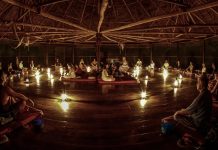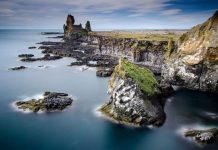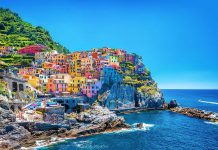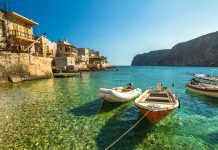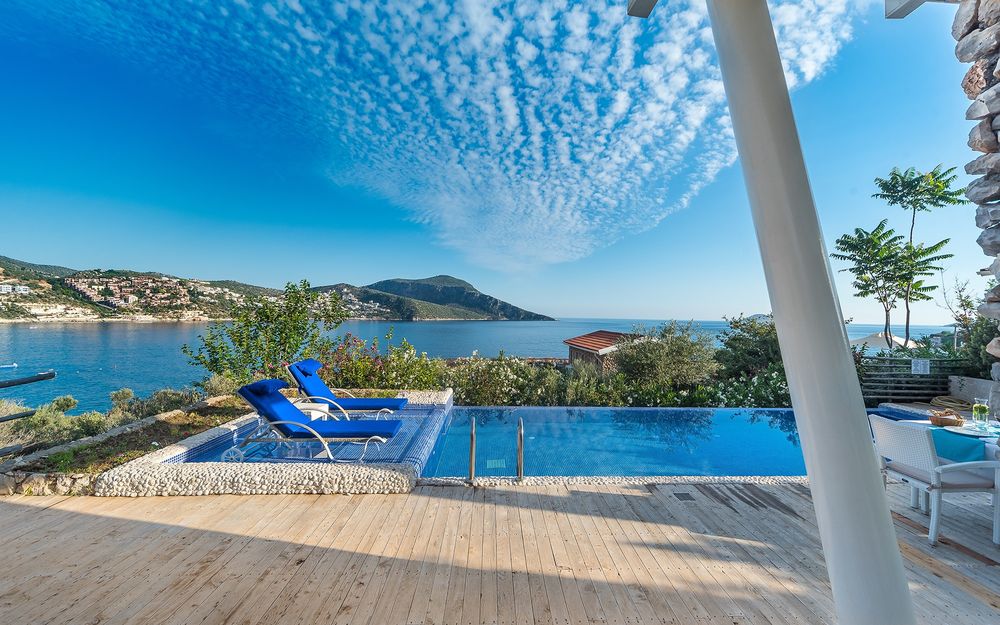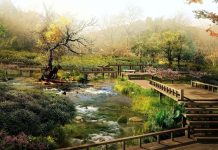About 25 km to the east of Allat is the former Urartian city of Adildjevaz, now it is dominated by a majestic fortress built by the Seljuk Turks.
Meltwater from the eternal snows covering the top of Mount Syupkhan flows down in the direction of Adildjevaz, making the lands in its vicinity fertile and blooming. On the western outskirts of the city there is the Ulu Jami Mosque, built in the XIII century, where prayers are still held daily.
Take a taxi from the city center to the Kef Fortress, another Urartu-era citadel towering over the valley.
Van
More urban in style, businesslike and not so conservative, Van is very different from the rest of the settlements of Southeastern Anatolia. Young couples walk hand in hand, musical groups perform Kurdish melodies in pubs, and the cheerful population cheerfully overcomes the consequences of recent earthquakes.
Van can be proud of its exceptional location near the lake of the same name. You can not dream about beaches and water sports. Instead, focus on the amazing monuments, including the Van Fortress – it is also called the Van Rock – devote a few days to traveling around the lake and explore the nearby historical settlements of Chavushtepe, Hoshap.
All hotels, restaurants, Internet cafes, ATMs, post offices and offices of bus companies are concentrated on and around Jumhuriyet Street.
History
The kingdom of Urartu, the biblical Ararat, flourished from the XIII to the VII century BC. Its capital was located in the vicinity of the modern city of Van. Many aspects of Urartian culture were borrowed from the Assyrians who lived in the neighborhood, with whom the Urartians were more or less constantly at war. The powerful Assyrians never conquered Urartu until several waves of Cimmerians, Scythians and Medes successively joined the battle – as a result, the kingdom collapsed.
Later, the region was settled by a people that the Persians called Armenians. By the VI century BC, this area was ruled by Persian and Median satraps.
In the VIII century A.D., an Arab army invaded from the south, forcing the Armenian prince to flee to Akdamar Island. Unable to resist the Arabs, he agreed to pay tribute to the caliph. When the Arabs retreated, the Byzantines and Persians took their place – the rule of Armenia passed from one to the other in accordance with the acquisition of one of the sides of military superiority.
After the defeat of the Byzantines at Manzikert in 1071, Seljuk Turks appeared on the scene, followed by hordes of Turkic nomads. They founded the Rum Sultanate with Konya as its capital. In Eastern Anatolia, the era of the rule of the Turkish emirs began, it lasted until the arrival of the Ottomans in 1468.
During the First World War, the Armenian rebels, who sought to create an independent Armenian state, collaborated with Russian troops who defeated the Ottoman army in eastern Turkey. Since then, the Armenians, who formally remained loyal subjects of the Sultan, were regarded by the Turks as traitors. Fierce battles between Turkish and Kurdish forces on the one hand and Russian and Armenian forces on the other caused devastation of both the entire region and the city of Van.
Before Russian troops occupied Van in 1915, the old part of the city was destroyed by the Ottomans. Despite the counterattacks being launched, the Ottomans could not expel the invaders, and Van remained occupied by the Russians until the armistice in 1917. After the formation of the Republic of Turkey, a new Van was designed and built 4 km east of the old city.
On October 23, 2011, Van was shaken by a 7.1 magnitude earthquake, during which about 100 people died and more than 1,000 buildings were destroyed. The city of Er-chis on the northern shore of Lake Van was also badly damaged. A significant aftershock of 5.7 points hit Van on November 9, 2011, leading to new victims and destruction, including the collapse of hotels in the city center.
Residential quarters were also damaged, tens of thousands of citizens were left homeless, many fled from the harsh winter of Eastern Anatolia to warmer areas in the west of the country. While working on the book, many residents of Van were still living in containers, and the Turkish government is building houses on the slopes above the city.
About 4 km west of the center is Van Castle, dominating the city. Try to come here at sunset to appreciate the outstanding view of the lake.
The fortress occupies a large area, this should be borne in mind in the intense heat. Ask them to drop you off at the northwest corner of the cliff, where there is a ticket office and an outdoor tea room.
Just behind the ticket office there is an old stone bridge and several willows are growing. The staircase on the left leads up to the cliff. On the way up, you will pass a ruined mosque with a minaret and a building with an arched roof, which housed an Islamic theological school.
From the top there is a view of the foundations of the buildings of Zeki Van, located on the southern side of the cliff. On a flat space dotted with the grass-grown foundations of countless houses, the old town, destroyed during the First World War, stood. Only a few buildings have survived, they are clearly visible from the top: Khusrev Pasha Kulliyesi, built in 1567, to which a tomb was added as a result of restoration; the nearby Kaya Celebi mosque with a similar striped minaret; the brick minaret of the Seljuk mosque Ulu Jami, as well as Kyzyl Jami.
At the ticket office, ask the caretaker to show the huge cuneiform inscriptions and numerous Armenian carved khachkars crosses carved on the southern side of the rock. Also check out the water tank, the ancient bathhouse and the ruined palace. Further south, you can easily get to Kyzyl Jami and Ulu Jami. From some distance from the cliff, from where a wider perspective opens, the caretaker can show several tombs cut in stone, among them the tomb of King Argishti.
On the way back to the ticket office, ask the caretaker to show you the Sardur Burja located in a small willow grove – it is not easy to find the way here in the absence of signs. It is a large rectangular stone with cuneiform inscriptions in Assyrian praising the king of Urartu Sarduri I.

